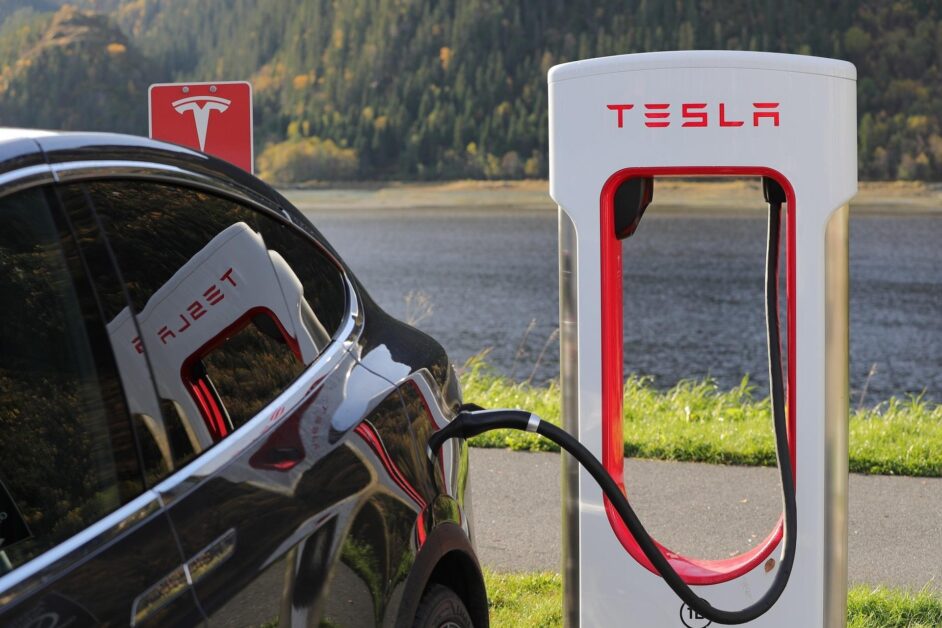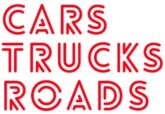Electric vehicle (EV) ownership just got a significant boost for Hyundai drivers in the United States. As of March 25, 2025, owners of select Hyundai EV models can tap into Tesla’s extensive Supercharger network—over 20,000 stations strong—thanks to a clever adapter and a strategic partnership. This move nearly doubles the fast-charging options available to Hyundai EV owners, marking a pivotal moment in the push toward widespread EV adoption. Here’s what this development means, how it works, and why it’s a big deal for drivers and the industry alike.

A New Era of Charging Convenience
For years, Tesla’s Supercharger network has been a gold standard in EV infrastructure, known for its reliability and widespread coverage. Now, Hyundai owners gain access to U.S. Tesla Superchargers, bridging a gap that once separated these two automotive giants. Starting in late March 2025, owners of Hyundai models like the KONA Electric, IONIQ Electric hatchback, IONIQ 5, and IONIQ 6—all equipped with Combined Charging System (CCS) ports—can use a North American Charging Standard (NACS) adapter to plug into Tesla’s stations. Even the high-performance 2025 IONIQ 5 N joins the list, ensuring that a broad range of drivers benefit.
This isn’t just about adding numbers to a map. With Hyundai owners gaining access to U.S. Tesla Superchargers, the availability of DC fast-charging stations for these vehicles effectively doubles. That’s a massive leap in convenience, especially for those who rely on public charging for long trips or urban living. Olabisi Boyle, Hyundai Motor North America’s Senior Vice President of Product Planning and Mobility Strategy, put it succinctly: “This move improves the public charging experience by giving our customers even more choice.” It’s a practical step toward easing range anxiety—a lingering concern for many EV owners—and making electric driving more seamless.
How It Works: The Adapter Advantage
The key to this expanded access is a Hyundai-designed CCS-to-NACS adapter, tailored specifically for its battery electric vehicles, including those built on the e-GMP high-voltage platform. For eligible owners who purchased or leased their EVs on or before January 31, 2025, Hyundai is offering this adapter at no cost. It’s a gesture of appreciation—and a smart way to keep early adopters in the fold as the company ramps up its electrification efforts.
Claiming the adapter is straightforward but requires some digital legwork. Starting the week of April 7, 2025, eligible owners will receive an email from Hyundai with instructions. To qualify, you need an active MyHyundai account and must have opted into email communications. Once the email arrives, you’ll verify your details—like shipping address and vehicle model—confirm the terms, and wait for the adapter to arrive. If your address needs updating, a quick tweak on MyHyundai.com will trigger a new email, though it might take a week to process. The clock’s ticking, though: you’ve got 60 days from receiving the email to complete the process.
The adapter itself is a small but mighty tool, enabling reliable charging at Tesla’s V3 Superchargers and other NACS-compatible stations. It’s a bridge between Hyundai’s current CCS-equipped fleet and the future, where NACS ports will become standard on new models. For now, Hyundai owners gain access to U.S. Tesla Superchargers without needing to wait for those next-gen vehicles.
The Eligible Lineup
Not every Hyundai EV qualifies for this perk. The complementary adapter is reserved for owners of the following models, purchased or leased by January 31, 2025:
- KONA Electric: A compact crossover with solid range and affordability.
- IONIQ Electric (hatchback): An earlier entry in Hyundai’s EV lineup, still kicking with CCS compatibility.
- IONIQ 5: A standout in design and performance, built on the e-GMP platform.
- IONIQ 6: A sleek sedan with impressive aerodynamics and range.
- 2025 IONIQ 5 N: The high-performance variant, proving EVs can be thrilling too.
If you’ve got one of these in your garage, you’re in luck. Newer models, like the refreshed 2025 IONIQ 5 with its native NACS port, don’t need the adapter—and thus don’t qualify for the freebie. The same goes for the upcoming 2026 IONIQ 9 and future EVs, which will roll out with NACS built in.
Hyundai Owners Gain Access to U.S. Tesla: A Strategic Shift
This isn’t just a win for drivers—it’s a bold statement from Hyundai. By aligning with Tesla’s charging ecosystem, the company is signaling its commitment to flexibility and customer satisfaction. Hyundai owners gain access to U.S. Tesla Superchargers at a time when EV adoption is accelerating, and infrastructure remains a critical bottleneck. Doubling fast-charging options could tip the scales for hesitant buyers, making Hyundai’s lineup more appealing in a competitive market.
The move also reflects a broader trend: collaboration over competition. Tesla has been opening its Supercharger network to other automakers, and Hyundai’s quick adoption of NACS adapters—and soon, native ports—shows it’s not afraid to lean into that shift. It’s a pragmatic choice, too. Tesla’s network is already in place, well-maintained, and trusted by EV drivers. Why reinvent the wheel when you can plug into it?
Beyond the Adapter: Hyundai’s Bigger Plan
Hyundai isn’t stopping at adapters. The company is laying the groundwork for a robust EV future. The 2025 IONIQ 5 already sports a native NACS port, and the 2026 IONIQ 9—a three-row electric SUV—will follow suit. Future models will continue this trend, phasing out the need for adapters entirely. It’s a forward-thinking approach that ensures Hyundai owners gain access to U.S. Tesla Superchargers and other NACS stations without extra hardware down the line.
That’s just one piece of the puzzle. Hyundai is also boosting U.S.-based EV and battery production at its Savannah, Georgia facility, aiming to localize supply chains and meet growing demand. Meanwhile, the IONNA joint venture—a high-speed charging network backed by multiple automakers—promises expanded public charging options, with discounted rates for Hyundai customers. Add in perks like out-of-home charging credits or a free Level 2 home charger with installation through Hyundai Home, and it’s clear the company is all-in on electrification.
What It Means for Drivers
For Hyundai EV owners, this is a practical upgrade. Imagine planning a road trip and knowing you’ve got 20,000 more charging stops at your disposal. Hyundai owners gain access to U.S. Tesla Superchargers, which are often strategically placed along highways and in urban hubs, offering fast, reliable power. Pair that with Hyundai’s best-in-class charging speeds—some models can juice up from 10% to 80% in under 20 minutes—and you’ve got a recipe for stress-free travel.
Take the IONIQ 5, for example. Its sleek design and 300-mile range already make it a contender, but access to Tesla’s network adds a layer of confidence. Whether you’re zipping through California or crossing the Midwest, those Supercharger dots on the map start to feel like a safety net. For KONA Electric owners, the smaller battery doesn’t seem as limiting when fast charging is this accessible. Even the IONIQ 5 N, built for performance, benefits from quick pit stops that keep the adrenaline flowing.
The Fine Print
This initiative is U.S.-specific for now. Hyundai Motor Canada has promised details on Supercharger access and adapters later in 2025, so northern neighbours will need to sit tight. Stateside, the complimentary adapter offer is a one-per-vehicle deal, tied to purchases or leases made by January 31, 2025. Miss the 60-day redemption window, and you might be out of luck—or at least out of a free adapter. Hyundai hasn’t said whether adapters will be available for purchase later, but given the shift to native NACS ports, this could be a limited-time bridge.
A Broader Impact
Hyundai owners gain access to U.S. Tesla Superchargers at a pivotal moment for EVs. The U.S. is pushing to electrify its roads, but charging infrastructure has lagged behind ambition. By tapping into Tesla’s network, Hyundai is helping close that gap without waiting for new stations to sprout. It’s a boost for current owners and a selling point for prospective buyers, showing that EV life doesn’t have to mean compromise.
This collaboration could also nudge other automakers to follow suit. As more brands adopt NACS—either through adapters or native ports—Tesla’s once-exclusive network becomes a shared resource, potentially standardizing fast charging across the industry. For consumers, that’s a win: fewer cables to juggle, more places to plug in, and a smoother transition to electric driving.
Looking Ahead
Hyundai’s adapter rollout is just the beginning. As native NACS models hit the market and the IONNA network takes shape, the company is positioning itself as a leader in EV accessibility. Hyundai owners gain access to U.S. Tesla Superchargers today, but tomorrow, they’ll have even more options—homegrown and collaborative alike. It’s a practical, customer-focused strategy that sidesteps flashy promises in favour of real-world solutions.
For now, eligible owners should keep an eye on their inbox come April 7. That email isn’t just a notification—it’s a ticket to a bigger, better-charged world. Hyundai’s not selling you a dream; it’s handing you the tools to drive it.
